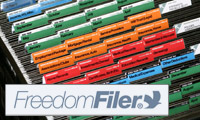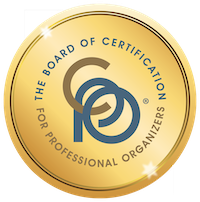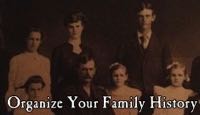Decluttering old papers and memories

Over the weekend, I faced down the challenging of decluttering a file cabinet full of old papers and memories. I love having these experiences that put me in my clients’ shoes and help me better understand what they’re going through.
A number of years ago, I moved my office four-drawer filing cabinet into the basement, replacing it in my office with an Elfa file cart. I didn’t bother decluttering the stuff that moved to the basement with the file cabinet. It was all papers related to achievements in my first two (and only) jobs, as well as administrative and project files from my decade as a dog writer, along with over 100 files of newspaper and magazine clippings of published articles I’d written.
They might have sat there until we moved, except that we’re doing a big repair and renovation in our basement, so the file cabinet has to be moved several times. It seems like a good time to (literally) lighten the load in that cabinet.
So I went to the basement and started going through the files. It was a fun and sometimes sad trip down memory lane. The tricky part was much of the material in that file cabinet pre-dated the worldwide web as we know it so isn’t available online (or at least not easily). I always caution people to give some thoughtful consideration to discarding irreplaceable items, but I also tell them that the more sentimental items they keep, the less value any of it has. So I was experiencing the push-me-pull-you of those two factors.
In the eighties, I worked for a non-profit on an international project that involved publishing magazine supplements in magazines around the world. I had a copy of each of those supplements. They really don’t have any value for me—in thirty years I’ve never once been asked about them. Yet they evoke some fond memories. (I traveled around the world and met those magazine editors.) And I don’t think they exist in digital form. What to do?
After a little thought, I decided to keep one of them and recycle the rest. That felt a little scary but also gave me that great feeling of lightening the load.
My next job was doing media relations for the Missouri Botanical Garden and I had kept some important clippings I’d placed. Back then I was able to garner some pretty significant attention for stories that felt like a very hard sell. Those clippings and the news releases I’d written to place them could be handy if I were every seeking a job in media relations. But the likelihood of that is close to nil. So I ended up keeping a little portfolio I’d created back then and recycling everything else.
Then I came to the more recent career—all the files from when I was a dog writer from 1995 to 2005, when I started Peace of Mind Organizing. I threw away all past project files, which was a pretty easy decision. Then I dealt with the clipping files. I wrote something like 150 articles and back in those pre-internet days one mailed photocopies of clippings with query letters to try to get magazine assignments. So I had made a bunch of copies of every article I published. Only laziness had stopped me from getting rid of the extras years ago. Yesterday, in the spirit of lightening the load, I kept one copy only of the more significant articles, like the ones that appeared in national magazines (I wrote quite a bit for Family Circle—that’s part of one of my favorite Family Circle articles in the photo above), the columns I wrote for a now-defunct magazine and a now-defunct website, and the articles for which I won awards. I went from hundreds of files to a single, fairly thick, file.
Going through this process was a great mental exercise. I got to revisit some achievements, which is always fun. I cried when I read the column I’d written after our dog, Scout, died in October 2001 and the one I wrote after our other dog, Kramer, died in December 2001. It made me appreciate, as I probably didn’t at the time, that those articles probably helped others who were grieving the loss of their pets. I’m glad I kept hard copies of those because they’d be tricky to find online.
Do you have ancient files or other memorabilia lurking somewhere in your house? I encourage you to bring them out into the light and go through them. You may jog some really fond memories. And you find it easier than you think to let go of this particular type of excess. Trust me, it can be liberating!
Interested in genealogy? Check out my new Orderly Roots guides!

As regular readers of this blog know, I’m a genealogy enthusiast. I love genealogy so much—and so enjoy organizing my genealogy research—that three years ago I created a blog called Organize Your Family History.
This week, I introduced my new Orderly Roots guides. These short downloadable guides are modeled after the Organizing Guides I created on this website five years ago. The Orderly Roots guides allow me to go a bit more in depth than I can on the Organize Your Family History blog.
So far I’ve published two of a planned ten guides. The first two are:
- 10 Secrets to Organizing Your Genealogy Research, based on my experience as a professional organizer and
- 10 Things I Wish I’d Known When I Started Doing Genealogy based on all the mistakes I made when I started out.
The Orderly Roots guides are about ten pages each and sell for $8.99.
If you have any interest in family history research, I encourage you to check them out!
Expert clothing advice for women of a certain age
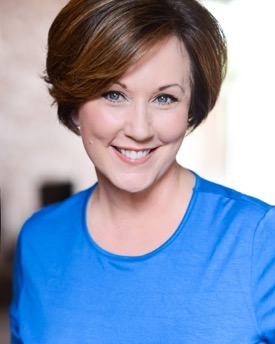
Geralin Thomas
As I posted last week, I had a lovely time creating a capsule wardrobe with my friend and wardrobe advisor, Geralin Thomas. Geralin has been helping me with my clothing for eight years and I am so grateful for her expert advice.
In 2007, I was 45 and now I’m 53. In that time, my body has changed somewhat, with a little more padding in the hips than used to be there. That, plus the fact I’m now in my fifties, has changed Geralin’s advice for me a bit.
Last week, she gave me five bits of clothing-selection advice (and permission to share) that is specific to me, but applies to many fifty-something women. (The last one is specific to narrow-on-the top, wider-on-the-bottom women like me.)
- Colors matter. They help simplify the shopping process by ruling some colors out.
- Some colors are so much more flattering than others. Try to shop for colors that match your hair and eye colors and complexion.
- Smaller lapels are less trendy and more classic and therefore have more staying power.
- Thin knits are not so great on many of us as we’re getting older and losing muscle tone, gaining lumps and bumps. Instead, look for thicker knits; ponte knits are especially nice if you’re trying to “glam-oflauge” areas like thighs, bottom, or back-bulge.
- Longer cardigans are not figure friendly for me. Instead, a little structure in a sweater or a jacket helps bring balance.
Geralin always looks amazing and I am delighted that she is so willing to share her wardrobe wisdom. Thank you, Geralin!
Creating a capsule wardrobe
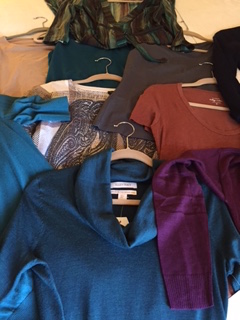
For the last eight years I’ve been fortunate enough to be friends with Geralin Thomas, a professional organizer and wardrobe consultant who has patiently been trying to educate me on what to wear and how to wear it. (I like looking nice, but I lack confidence in knowing what looks great on me and how to put together outfits.)
Geralin was visiting me recently and, like she did last year, went through my closet with me so that we could retire those garments that were either unworn or too worn. She took a look at what was left and created a mental shopping list to fill things out.
And then we had some very successful (and, I must say, enjoyable) shopping excursions. The icing on the cake was the time we spent yesterday putting together top-to-bottom outfits, so I can dress with confidence.
My goal is to have as few clothes as possible and still feel well-dressed. I’m easily overwhelmed by choices, so when choices are limited I am happier.
Geralin taught me that what we did was create capsule wardrobes for me. On page 85 of her new book, Decluttering Your Home: Tips, Techniques and Trade Secrets Geralin describes a capsule wardrobe as one in which “individual pieces are combined into outfits that offer maximum use…it’s simply a collection of pieces that work together.” In my case, I now have a nice, simple color-coordinated collection. Everything goes together so I can’t really mess it up. (But to keep from messing up, I photographed the outfits that Geralin put together for me—including accessories.) This allows me to dress with confidence and it makes dressing so much easier.
Here’s a photo of happy me with part of our score from the designer section of the fabulous Scholarshop, a charity resale shop in St. Louis.
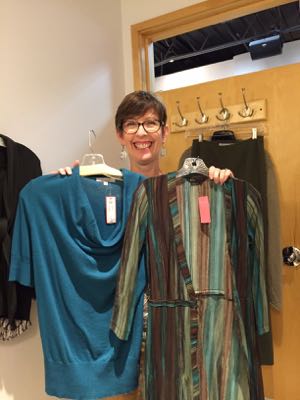
A year ago, we purchased clothes in three neutral colors: black, charcoal and camel. Most of those clothes are still in my closet, and this year we added some color. Primarily, we focused on peacock, teal, green, rust and plum.
My pants wardrobe has been pared down to three pairs of dress pants (black, charcoal, camel—they go with all my tops), along with some black leggings, some ponte knit fitted pants and some jeans. (I have some attractive work-out clothes that I wear when I’m leading organizing teams.) I don’t need any more options than that. And It feels so good.
We took photographs of the outfits, including accessories, and my next step will be to use Geralin’s Wardrobe Planner Worksheet (which you can download free from her website) to write down the individual components of the outfits. I did this last year and it was very helpful.
Geralin is so patient with me and slowly, ever so slowly, I’m learning. Thanks to the great choices we made, I don’t think I’ll have to do any shopping for quite some time, but if I do venture out without Geralin, I think I’ve learned enough that I can make some successful choices!
My love for my Kindle Paperwhite stands the test of time
At the end of 2012, I bought myself a little gift: A Kindle Paperwhite e-reader. After less than two weeks with it, I was in love and wrote a blog post about why I love my Kindle Paperwhite.
We’re closing in on the 3rd anniversary of that purchase and my love has not wavered. Three years is an eon for a mobile device. I’ve not once been tempted to upgrade this piece of technology that I literally use daily. (I love my iPhone 5S, too, but can’t wait to upgrade when my contract is up in March.)

Here’s why I love my Kindle Paperwhite so much:
- It holds thousands of books (though I only have hundreds).
- It doesn’t slow down as I fill it with books (occasionally, page turning is slow and I then reboot and it’s fine again).
- It’s lightweight.
- I can hold it in one hand.
- When I open its leather case with magnetic closure, the Paperwhite turns on and take me to my place in the book, so it’s a bit like opening a paper book. (Closing the case turns off the Paperwhite.)
- It has an adjustable light that’s not harsh.
- There’s no screen glare, so I can read in bright sunlight.
- A single battery charge lasts weeks.
- I can use it as a flashlight in our dark bedroom when I get up in the middle of the night.
- It allows me to have the book I’m reading with me at all times—because even if I’m don’t have my Kindle device with me, I can read the book on my iPhone’s Kindle app and pick up where I left off.
- If I come across a word I don’t understand, I can just touch it and, if I have a wifi connection, the definition will be revealed. (How great is that?)
When I first bought the Kindle, I was worried that I’d spend a lot of money on books. Before that, I was using the library and accustomed to satisfying my reading habit without spending money. The fact is, I’m spending no more money on books than I was back then. I occasionally purchase Kindle (or even paper) books that are important for my work, just as I did when I was primarily a library user. But most of the books I read are free, through these services:
- The St. Louis Public Library’s Get It Now ebook program
- The St. Louis County Library’s eMedia program
- The Kindle Owner’s Lending Library, which is available to people with Amazon Prime
- BookBub, which sends me a daily email with low- or no-cost Kindle books offered in the genres I select. (I blogged about BookBub in 2013.)
I’m on track to read 52 books this year. (Nerd that I am, I keep track of them in Evernote.) I could count the number of those books I paid for on one hand. The Kindle makes it easy for me to devour books because I can take them with me and I can easily read them in bed. When I travel, I never have to worry about finishing the book I’m working on and getting my hands on another for the trip home.
Hats off to Amazon for creating a device that has stood the test of time. I see that the newer generation Kindle has a higher resolution, but I remain loyal to my 2012 version, because it meets all my needs.
Monkey Bars: Strong, attractive garage products
One key to having a neat and organized garage is getting everything you can off the floor. I’ve seen a variety of options in my clients’ garages, but I hadn’t been exposed to Monkey Bars before I saw them at this year’s NAPO conference. I was impressed by the strength and durability of the garage shelving systems I saw.
Then I was contacted by their marketing folks offering a product for review. Since I was curious about the product, I accepted a Large Yard Tool Rack. We’re not much of a yard and garden family (we hire someone to take of the lawn) and we have limited tools, which we pretty much hang on nails on the joists of our decidedly un-fancy garage. There was definite room for improvement in the storage of our yard tools, so I was anxious to give it a try.
I was encourage by this video, which shows how easy the installation is.
I don’t own a drill, so I asked my handy friend John if he would install it for me. Installation really was a breeze—the hardest part was figuring out where to place the rack. It took at most 15 minutes for John to install it and it would have been faster if I weren’t there distracting him.
Not only did the rack go up very easily, but it’s solid and attractive. The hooks attach with a metal clip, not plastic, and they attach very easily and solidly. When John finished installing it, he said, “This is great; I’m going to buy one for my garage.” High praise indeed.
The price is good, too. The kit comes with the 51” bar, two brackets and hardware, plus eight different hooks. All for $99.99.
A look at their website shows that Monkey Bars is about a lot more than yard tool storage. They make overhead storage, garage cabinets, and shelving that can be integrated with their other products. The brackets holding up the shelves can hold bars on which can be hung tools or accessories. I’m impressed!
For the larger products they offer dealer installation, which for someone like me gives great peace of mind. I was glad to have this opportunity to try a Yard Tool Rack and experience the quality of the product. I’ll be mentioning it to clients who are looking to use products to upgrade their garage organization.
The 30 X 30 challenge
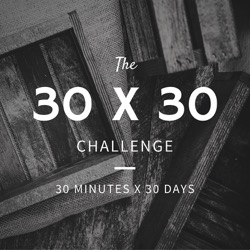
I love doing genealogy research, but I often have trouble finding time to do it. Because it’s seldom urgent, it falls to the bottom of the priority list, like so many enjoyable things. Since I blog at my other blog, Organize Your Family History, it’s important for me to do the research so I have genealogy-related things to blog about. But, as I said, it can be a challenge to find time.
In early August, I decided to implement a personal 30 X 30 genealogy challenge, in which I committed to doing 30 minutes of genealogy research 30 days in a row. It was amazingly effective. I did not miss a day, and I had days where there was no way I would have done it otherwise—one day there was a big family emergency, but I managed to do my research. Another day I led a huge organizing team for 10.5 hours, but I got in my 30 minutes before leaving the house.
One thing that made it easy was that I was working on a specific project (transcribing my great great great grandfather’s Civil War pension file), so I had a specific task to do and could skip the step of deciding what to work on.
I think one of the reasons this was so successful is that it felt realistic. 30 minutes is not a long time. And the whole thing would be over in 30 days. If I had made a one-year commitment, I probably would have given up on week two.
My 30 X 30 genealogy challenge ended on September 5 and I probably did research all of five times in the remaining weeks of September. Today is October 1 and I’ve decided to implement another one, starting today, so that I get more genealogy research done.
But I’m also thinking of other areas of my life where I could implement a daily challenge. It could be a great way to jumpstart a new habit. I think, for me, the factors I need to make it a successful challenge are:
- It needs to be something I want to do daily (obviously)
- It needs to require relatively low effort
- The effort needs to be measurable
The obvious choice for me is exercise, something that I struggle to find time to do every day. I will commit to taking a 30-minute walk, or the exercise equivalent, as measured by my Apple Watch, every day for 30 days. Today is the first day of October, and it’s nice, though not required, to start things like this on the first day of the month. So off I go! I’ll report on progress here.
Links
- Shannon Wilkinson, life coach
- NAPO St. Louis
- National Association of Productivity and Organizing Professionals
- Are you interested in becoming a professional organizer?
- Organize Your Family History
- Ravelry
- Getting to Good Enough podcast
- Peace of Mind Spending
- Institute for Challenging Disorganization



